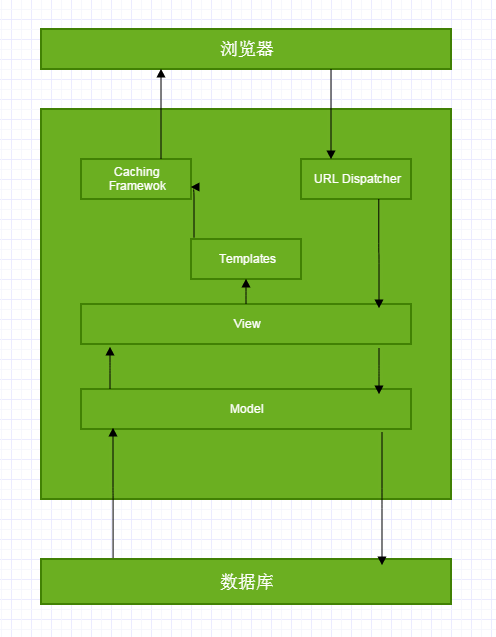- 解锁 Python 与 MySQL 交互密码:全方位技术解析与实战攻略
秋夜Autumn
pythonMySQL
目录一、引言二、环境准备2.1安装MySQL2.2安装Python及相关库2.2.1使用mysql-connector-python2.2.2使用pymysql三、基本连接与操作3.1连接到MySQL数据库3.2创建游标对象3.3执行SQL查询3.3.1查询单条记录3.3.2查询多条记录3.4插入数据3.5更新数据3.6删除数据3.7关闭连接四、错误处理五、高级操作5.1使用事务5.2处理大型结果
- Python Pandas数据清洗与处理
大数据张老师
Python程序设计pythonpandas开发语言
PythonPandas数据清洗与处理在进行数据分析时,原始数据往往包含了许多不完整、不准确或者冗余的信息。数据清洗与处理的任务就是将这些杂乱无章的数据清理干净,确保数据的准确性和一致性,从而为后续的分析工作打下坚实的基础。Pandas提供了强大的工具来帮助我们清洗和处理数据,尤其是在处理Series和DataFrame时,它能够高效地进行数据的筛选、填充、删除、替换等操作。本节将通过一些常见的数
- 成功使用devpi搭建PyPI缓存源,建立内网python安装包服务器(通过代理上网)
jcsx
基础运维知识库开源学习pythonpipnginx
前言缓存源和镜像源的区别:缓存源:初始状态为空。下载请求的软件包没有缓存,则回源到设置的上游镜像源,然后该软件包会被缓存。如果请求的软件包已经被缓存,则直接从本地缓存返回用户。下载速度:第一次速度=通过外网从上游镜像源下载的速度;之后的速度=内网带宽速度。磁盘空间:少。初始时只保存了软件包索引,随着使用过程,软件包被缓存,磁盘占用逐渐变大。镜像源:初始状态含有所有软件包,并且定时与上游镜像源同步。
- Python接口自动化测试框架(实战篇)-- Jenkins持续集成
职说测试
pythonjenkinsci/cd自动化测试接口自动化测试
文章目录一、前言二、[Jenkins](https://www.jenkins.io/)2.1、环境搭建2.2、插件准备2.3、创建job2.4、小结2.5、构建策略2.6、报告展示2.7、扩展三、总结一、前言温馨提示:在框架需要集成jenkins的时候,一定要注意环境切换问题,如果jenkins和开发环境是同样的系统且都有python环境,基本不用太担心代码的移植问题,如果是跨平台了,那么需要注
- python实战项目34:基于flask的天气数据可视化系统1.0
wp_tao
Python副业接单实战项目flask信息可视化python
基于flask的天气数据可视化系统1.0一、效果展示二、flask简介三、图表绘制四、前端页面编写五、完整代码一、效果展示该flask项目相对简单入门,使用了flask框架、bootstrap前端技术,数据使用的是上一篇scrapy爬取城市天气数据中爬取到的数据。二、flask简介Flask是一个基于Python的Web开发框架,它以灵活、微框架著称,基于werkzeug的轻量级web框架,可提高
- Jira用例自动去除summary重复用例
吾爱乐享
wwww.fen
title:Jira用例自动去除summary重复用例tags:-jira-pythoncategories:-python一、背景与需求二、解决方案思路三、实施步骤本文永久更新地址:在使用Jira进行项目管理时,测试用例的维护至关重要。随着项目推进,用例数量增多,可能会出现summary重复的情况,手动排查费时费力,因此实现自动去除重复用例功能意义重大。一、背景与需求项目团队在Jira中积累了大
- RPA与Python
空着
部分朋友可能是了解Python的。Python这两年,火的两点,就是聚焦于两个场景:数据抓取和办公自动化。那么Python算RPA吗?RPA是一种概念,依托于这个概念诞生了很多产品。而Python是一种计算机语言,Python不仅仅可以做RPA概念范围内的东西,还可以做其他东西。但是,Python做数据抓取也好,做办公自动化也好,他都是聚焦于具体的场景本身。而并非聚焦于RPA概念上的。所以,很少见
- Python爬虫技术 第12节 设置headers和cookies
hummhumm
python爬虫开发语言djangoflaskjavaspring
在使用Python进行网络爬虫开发时,经常需要模拟浏览器行为,这包括设置请求头(headers)和处理cookies。下面我将详细介绍如何在Python中使用requests库来设置headers和处理cookies。设置HeadersHeaders包含了客户端发送给服务器的信息,比如用户代理(User-Agent)、接受的内容类型(Accept)、语言偏好(Accept-Language)等。设
- Python爬虫技术 第16节 XPath
hummhumm
python爬虫开发语言flaskjavamavenjava-ee
XPath是一种在XML文档中查找信息的语言,尽管XML和HTML在语法上有区别,但XPath同样适用于HTML文档的解析,尤其是在使用如lxml这样的库时。XPath提供了一种强大的方法来定位和提取XML/HTML文档中的元素和属性。XPath基础XPath表达式由路径表达式组成,它们指定了文档中的位置。下面是一些基本的XPath语法:根节点:/表示绝对路径的开始,指向文档的根节点。//表示从当
- 【实践】Python实现气象数据分析与可视化
大数据张老师
Python程序设计信息可视化python数据分析可视化
一、项目需求在本节中,我们将明确“气象数据分析与可视化”项目的需求,定义项目的功能和目标,为后续的实现奠定基础。通过本项目,读者将学习如何使用Python的各种数据处理和可视化工具来分析和展示气象数据,从而掌握数据处理与可视化的核心技能。1.项目目标“气象数据分析与可视化”项目的目标是通过对历史气象数据的处理和分析,生成直观的图表和统计结果,帮助用户理解气象趋势并预测未来变化。项目的主要功能如下:
- 证券量化交易选择合适的编程语言
jcsx
量化numpypandaspyqtservletjavascript
在证券量化交易中,选择合适的编程语言至关重要,因为它直接影响到开发效率、运行速度和策略的灵活性。常用的编程语言有几个,它们各自有不同的优势和应用场景。以下是一些在量化交易中常用的编程语言:PythonPython是目前量化交易中最流行的编程语言之一,特别是在金融数据分析和模型开发中,广泛被使用。Python的流行主要有以下原因:数据处理能力:Python有非常强大的数据处理库,如pandas(数据
- 基于 Jenkins 的测试报告获取与处理并写入 Jira Wiki 的技术总结
吾爱乐享
wwww.fen
title:基于Jenkins的测试报告获取与处理并写入JiraWiki的技术总结tags:-jenkins-pythoncategories:-jenkins在软件开发的持续集成与持续交付(CI/CD)流程里,及时、准确地获取并分析测试报告对保障软件质量至关重要。本文将详细阐述如何借助Jenkins搭建自动化系统,实现批量触发测试任务、获取测试报告关键信息并写入JiraWiki的全流程自动化,为
- 已解决python 的SyntaxError :invalid syntax异常正确解决办法,亲测有效,嘿嘿嘿
代码无疆
Pythonpython开发语言
文章目录问题分析报错原因解决思路解决方法示例1:拼写错误示例2:缺少符号示例3:错误的缩进示例4:错误的语句结构SyntaxError:invalidsyntax异常是Python中最常见的错误之一,它表示代码中存在语法错误。这种错误通常发生在Python解释器无法理解你的代码时,比如因为拼写错误、缺少符号、错误的缩进、不正确的语句结构等。问题分析当Python解释器报告SyntaxError:i
- 【Python篇】从零到精通:全面分析Scikit-Learn在机器学习中的绝妙应用
半截诗
Pythonpython机器学习scikit-learn人工智能深度学习数据分析随机森林
文章目录从零到精通:全面揭秘Scikit-Learn在机器学习中的绝妙应用前言第一部分:深入了解Scikit-Learn的基础知识1.什么是Scikit-Learn?2.安装Scikit-Learn3.Scikit-Learn中的基本构件4.数据集的加载与探索5.数据预处理标准化数据6.构建和训练机器学习模型构建逻辑回归模型7.模型评估与验证混淆矩阵第二部分:深入理解Scikit-Learn的高级
- Python设计模式 - 抽象工厂模式
mofei12138
设计模式pythonpython设计模式抽象工厂模式
定义抽象工厂模式是一种创建型设计模式,它提供了一种创建一系列相关或相互依赖对象的接口,而无需指定它们具体的类。产品等级结构与产品族为了更好地理解抽象工厂模式,先引入两个概念:产品等级结构:就是产品的继承结构。例如电视机抽象类有A品牌电视机子类和B品牌电视机子类,那么抽象电视机和具体品牌的电视机就构成了一个产品等级结构。产品族:同一个工厂生产的,位于不同产品等级结构中的一组产品。例如海尔工厂生产的海
- 【Python设计模式07】工厂方法模式
一碗姜汤
设计模式python设计模式工厂方法模式
工厂方法模式(FactoryMethodPattern)是一种创建型设计模式,它定义了一个用于创建对象的接口,让子类决定实例化哪一个类。工厂方法使得一个类的实例化延迟到其子类。通过使用工厂方法模式,可以将对象的创建过程与使用过程分离,从而提高代码的灵活性和可扩展性。工厂方法模式的结构工厂方法模式主要包括以下几个角色:抽象产品(Product):定义产品的接口。具体产品(ConcreteProduc
- 分形、大自然的分形几何、数据可视化、Python绘图
timedot-hj
python绘图指南-分形与数据可视化可视化python几何学算法
分形、大自然的分形几何、数据可视化、Python绘图中国传统中的『分形』大自然的分形几何数据可视化本系列采用turtle、matplotlib、numpy这三个Python工具,以分形与计算机图像处理的经典算法为实例,通过程序和图像,来帮助读者一步步掌握Python绘图和数据可视化的方法和技巧,并且让读者感受到“龙枝屈曲竞分形,瑰丽绮错千万状”的分形魅力。本系列共有八章,分别为海岸线有多长,基因与
- python用电预测_用Python实时追踪你家的电量使用情况
weixin_39626745
python用电预测
现在的电表(附在你家房子外面的玩意)在每瓦时电量被使用后就会发出一下红外闪光,穿过电表顶部的端口。事实证明,你可以很容易地监测这一闪光,把它解码变成“实时的”电量使用情况,然后做成像这样酷的图表:Y轴表示实时功率,单位是KW,X轴表示时间。这闪光灯,好像有很高的瞬间准确度,至少我家的是这样,这意味着当1瓦时电量被使用时,它会很精确地闪了。这实在太棒了,因为它使得显示精确、实时的电量使用情况可以实现
- Python Web开发
twc829
Python
Web开发介绍一、Web开发概述1C/S结构和B/S结构C/S—Client/Server,即客户机/服务器结构B/S—Browse/Server,即浏览器/服务器结构2B/S结构的优势2.1不用通知客户端安装某个软件2.2不用通知客户端升级2.3可轻松地实现跨平台3访问网站过程用户向服务器发起请求,服务器将HTML文件返回给用户,浏览器将HTML文件渲染成用户看到的网站;4分类4.1静态网站用户
- 如何优化Python开发:PIP和Anaconda的作用及国内源设置指南
Chaiio Dain
pythonpythonpip开发语言conda
前言在现代数据科学和软件开发的世界中,Python已经成为了最受欢迎的编程语言之一。其强大的生态系统和丰富的第三方库使得开发者可以快速构建各种应用程序和解决方案。然而,随着项目规模的扩大和复杂性的增加,管理Python包和依赖项变得尤为重要。PIP(Python包管理工具)和Anaconda(一个开源的Python发行版)就是在这种背景下应运而生的重要工具。PIP和Anaconda不仅简化了包的安
- 配置pip安装源
勤劳的搬砖工。
pippythonlinux
在Linux下配置pip的安装源折磨人的下载速度用过pip的人都知道,pip的下载速度简直令人窒息,有时候好有时候坏,简直全靠运气,甚至施加魔法也不行,所以选择配置一个下载源,从国内下载python包就显得很快,说实话百度网盘都比pip快。Linux下配置python2的安装源总所周知,python2和python3不一样,所以他们pip也不一样,配置也不一样修改工作目录下的.pip/pip.co
- FastAPI介绍
-zZR
fastapipython
1.fastapi介绍一个用于构建API的现代、快速(高性能)的web框架。特点快速:可与NodeJS和Go并肩的极高性能(归功于Starlette和Pydantic)。最快的Pythonweb框架之一。高效编码:提高功能开发速度约200%至300%。更少bug:减少约40%的人为(开发者)导致错误。智能:极佳的编辑器支持。处处皆可自动补全,减少调试时间。简单:设计的易于使用和学习,阅读文档的时
- Python 潮流周刊#87:媲美 OpenAI-o1 的开源模型(摘要)
python
本周刊由Python猫出品,精心筛选国内外的250+信息源,为你挑选最值得分享的文章、教程、开源项目、软件工具、播客和视频、热门话题等内容。愿景:帮助所有读者精进Python技术,并增长职业和副业的收入。本期分享了12篇文章,12个开源项目。下周因春节假期停更一周,提前恭祝大家蛇年吉祥,万事顺意!(PS.我在Python猫公众号给大家准备了一些红包封面,免费领取哟~)以下是本期摘要:文章&教程①优
- 一、新手学习爬虫第一课 对网站发起请求(基于python语言)
[木子加贝]
python自学爬虫学习爬虫python开发语言后端
目录前言一、安装并引用请求模块requests1.安装请求模块2.引用requests请求模块3.引用requests请求模块并使用别名二、发起请求1.对网站发起get请求(最常用的请求):(1)第一种方法(字符串)(2)第二种方法(变量)(3)第三种方法(关键字传参)2.对网站发起带参数的get请求:3.对网站发起post请求:4.对网站发JSON数据的post请求:4.注意事项总结前言爬虫的本
- 【Python Web开发】Python Web开发知识全解析
萧鼎
python基础到进阶教程python前端开发语言
PythonWeb开发知识全解析Python是一种强大的编程语言,以其简洁和高效而闻名,尤其在Web开发领域,它有着广泛的应用。Python提供了许多功能强大且灵活的Web框架,如Flask、Django、FastAPI等,使得构建现代Web应用变得简单而高效。本文将从PythonWeb开发的基本知识入手,逐步介绍开发流程、核心技术以及如何使用Python框架构建高效、可扩展的Web应用。1.什么
- 【Pip】配置和优化 `pip` 安装源:提升 Python 包管理体验的全面指南
丶2136
#pippippython开发语言
目录引言一、什么是`pip`配置文件?1.1配置文件的类型与位置二、配置文件的结构与配置项2.1中英文注释配置文件示例三、详细解析配置项3.1镜像源设置(`index-url`和`extra-index-url`)3.2代理设置(`proxy`)3.3安装选项(`no-deps`和`user`)3.4缓存控制(`no-cache-dir`和`cache-dir`)3.5日志和调试(`verbose
- Pytest插件介绍:pytest-django
东汉末年出bug
pytestdjangosqlite
pytest-django简介pytest-django是pytest的一个插件,专为Django应用程序和项目提供了一套有用的测试工具。pytest本身是一个功能强大的测试框架,以其简洁的API和丰富的插件生态而闻名。pytest-django则在此基础上,进一步简化了Django项目的测试流程,使得能够更轻松地编写、运行和管理测试。快速上手安装pytest-django要使用pytest-dj
- 奥比中光Geminipro相机使用
一傲
python开发语言
相机使用入门,使用python获取深度图和颜色图并显示。#安装依赖importcv2importnumpyasnpfrommatplotlibimportpyplotasplt#奥比中光OrbbecPythonSDKfromObTypesimport*fromPropertyimport*importPipelineimportStreamProfilefromErrorimportObExcep
- 2021 年 GitHub 上十大最火 Python 项目,看完之后我裂开了
酔清风
pythongithubpython开发语言
GitHub作为程序员每天必逛的网站之一,上面有着太多优秀的开源项目,今天派森酱就带大家来梳理下在过去的一年里,GitHub上最火的Python项目Top10。数据获取如果你留心看过GitHub的文档的话,你就会知道关于GitHub上的大部分数据,GitHub官方都是提供了接口了的。比如我们今天要获取的数据就可以从下面这个接口拿到。https://api.github.com/search/rep
- 一、PyCharm(Professional)搭建Django环境
郝家伙~
pycharmidepythondjango
目录一、创建项目1.左侧选择Django框架2.点击create开始创建项目3.下载Django失败,使用默认源下载可能失败,需要指定其他源,这里使用阿里源4.手动创建项目django-adminstartproject项目名称5.进入当前项目创建应用python3manage.pystartappsign6.点击运行按钮或终端运行项目python3manage.pyrunserverip:端口,
- 分享100个最新免费的高匿HTTP代理IP
mcj8089
代理IP代理服务器匿名代理免费代理IP最新代理IP
推荐两个代理IP网站:
1. 全网代理IP:http://proxy.goubanjia.com/
2. 敲代码免费IP:http://ip.qiaodm.com/
120.198.243.130:80,中国/广东省
58.251.78.71:8088,中国/广东省
183.207.228.22:83,中国/
- mysql高级特性之数据分区
annan211
java数据结构mongodb分区mysql
mysql高级特性
1 以存储引擎的角度分析,分区表和物理表没有区别。是按照一定的规则将数据分别存储的逻辑设计。器底层是由多个物理字表组成。
2 分区的原理
分区表由多个相关的底层表实现,这些底层表也是由句柄对象表示,所以我们可以直接访问各个分区。存储引擎管理分区的各个底层
表和管理普通表一样(所有底层表都必须使用相同的存储引擎),分区表的索引只是
- JS采用正则表达式简单获取URL地址栏参数
chiangfai
js地址栏参数获取
GetUrlParam:function GetUrlParam(param){
var reg = new RegExp("(^|&)"+ param +"=([^&]*)(&|$)");
var r = window.location.search.substr(1).match(reg);
if(r!=null
- 怎样将数据表拷贝到powerdesigner (本地数据库表)
Array_06
powerDesigner
==================================================
1、打开PowerDesigner12,在菜单中按照如下方式进行操作
file->Reverse Engineer->DataBase
点击后,弹出 New Physical Data Model 的对话框
2、在General选项卡中
Model name:模板名字,自
- logbackのhelloworld
飞翔的马甲
日志logback
一、概述
1.日志是啥?
当我是个逗比的时候我是这么理解的:log.debug()代替了system.out.print();
当我项目工作时,以为是一堆得.log文件。
这两天项目发布新版本,比较轻松,决定好好地研究下日志以及logback。
传送门1:日志的作用与方法:
http://www.infoq.com/cn/articles/why-and-how-log
上面的作
- 新浪微博爬虫模拟登陆
随意而生
新浪微博
转载自:http://hi.baidu.com/erliang20088/item/251db4b040b8ce58ba0e1235
近来由于毕设需要,重新修改了新浪微博爬虫废了不少劲,希望下边的总结能够帮助后来的同学们。
现行版的模拟登陆与以前相比,最大的改动在于cookie获取时候的模拟url的请求
- synchronized
香水浓
javathread
Java语言的关键字,可用来给对象和方法或者代码块加锁,当它锁定一个方法或者一个代码块的时候,同一时刻最多只有一个线程执行这段代码。当两个并发线程访问同一个对象object中的这个加锁同步代码块时,一个时间内只能有一个线程得到执行。另一个线程必须等待当前线程执行完这个代码块以后才能执行该代码块。然而,当一个线程访问object的一个加锁代码块时,另一个线程仍然
- maven 简单实用教程
AdyZhang
maven
1. Maven介绍 1.1. 简介 java编写的用于构建系统的自动化工具。目前版本是2.0.9,注意maven2和maven1有很大区别,阅读第三方文档时需要区分版本。 1.2. Maven资源 见官方网站;The 5 minute test,官方简易入门文档;Getting Started Tutorial,官方入门文档;Build Coo
- Android 通过 intent传值获得null
aijuans
android
我在通过intent 获得传递兑现过的时候报错,空指针,我是getMap方法进行传值,代码如下 1 2 3 4 5 6 7 8 9
public
void
getMap(View view){
Intent i =
- apache 做代理 报如下错误:The proxy server received an invalid response from an upstream
baalwolf
response
网站配置是apache+tomcat,tomcat没有报错,apache报错是:
The proxy server received an invalid response from an upstream server. The proxy server could not handle the request GET /. Reason: Error reading fr
- Tomcat6 内存和线程配置
BigBird2012
tomcat6
1、修改启动时内存参数、并指定JVM时区 (在windows server 2008 下时间少了8个小时)
在Tomcat上运行j2ee项目代码时,经常会出现内存溢出的情况,解决办法是在系统参数中增加系统参数:
window下, 在catalina.bat最前面
set JAVA_OPTS=-XX:PermSize=64M -XX:MaxPermSize=128m -Xms5
- Karam与TDD
bijian1013
KaramTDD
一.TDD
测试驱动开发(Test-Driven Development,TDD)是一种敏捷(AGILE)开发方法论,它把开发流程倒转了过来,在进行代码实现之前,首先保证编写测试用例,从而用测试来驱动开发(而不是把测试作为一项验证工具来使用)。
TDD的原则很简单:
a.只有当某个
- [Zookeeper学习笔记之七]Zookeeper源代码分析之Zookeeper.States
bit1129
zookeeper
public enum States {
CONNECTING, //Zookeeper服务器不可用,客户端处于尝试链接状态
ASSOCIATING, //???
CONNECTED, //链接建立,可以与Zookeeper服务器正常通信
CONNECTEDREADONLY, //处于只读状态的链接状态,只读模式可以在
- 【Scala十四】Scala核心八:闭包
bit1129
scala
Free variable A free variable of an expression is a variable that’s used inside the expression but not defined inside the expression. For instance, in the function literal expression (x: Int) => (x
- android发送json并解析返回json
ronin47
android
package com.http.test;
import org.apache.http.HttpResponse;
import org.apache.http.HttpStatus;
import org.apache.http.client.HttpClient;
import org.apache.http.client.methods.HttpGet;
import
- 一份IT实习生的总结
brotherlamp
PHPphp资料php教程php培训php视频
今天突然发现在不知不觉中自己已经实习了 3 个月了,现在可能不算是真正意义上的实习吧,因为现在自己才大三,在这边撸代码的同时还要考虑到学校的功课跟期末考试。让我震惊的是,我完全想不到在这 3 个月里我到底学到了什么,这是一件多么悲催的事情啊。同时我对我应该 get 到什么新技能也很迷茫。所以今晚还是总结下把,让自己在接下来的实习生活有更加明确的方向。最后感谢工作室给我们几个人这个机会让我们提前出来
- 据说是2012年10月人人网校招的一道笔试题-给出一个重物重量为X,另外提供的小砝码重量分别为1,3,9。。。3^N。 将重物放到天平左侧,问在两边如何添加砝码
bylijinnan
java
public class ScalesBalance {
/**
* 题目:
* 给出一个重物重量为X,另外提供的小砝码重量分别为1,3,9。。。3^N。 (假设N无限大,但一种重量的砝码只有一个)
* 将重物放到天平左侧,问在两边如何添加砝码使两边平衡
*
* 分析:
* 三进制
* 我们约定括号表示里面的数是三进制,例如 47=(1202
- dom4j最常用最简单的方法
chiangfai
dom4j
要使用dom4j读写XML文档,需要先下载dom4j包,dom4j官方网站在 http://www.dom4j.org/目前最新dom4j包下载地址:http://nchc.dl.sourceforge.net/sourceforge/dom4j/dom4j-1.6.1.zip
解开后有两个包,仅操作XML文档的话把dom4j-1.6.1.jar加入工程就可以了,如果需要使用XPath的话还需要
- 简单HBase笔记
chenchao051
hbase
一、Client-side write buffer 客户端缓存请求 描述:可以缓存客户端的请求,以此来减少RPC的次数,但是缓存只是被存在一个ArrayList中,所以多线程访问时不安全的。 可以使用getWriteBuffer()方法来取得客户端缓存中的数据。 默认关闭。 二、Scan的Caching 描述: next( )方法请求一行就要使用一次RPC,即使
- mysqldump导出时出现when doing LOCK TABLES
daizj
mysqlmysqdump导数据
执行 mysqldump -uxxx -pxxx -hxxx -Pxxxx database tablename > tablename.sql
导出表时,会报
mysqldump: Got error: 1044: Access denied for user 'xxx'@'xxx' to database 'xxx' when doing LOCK TABLES
解决
- CSS渲染原理
dcj3sjt126com
Web
从事Web前端开发的人都与CSS打交道很多,有的人也许不知道css是怎么去工作的,写出来的css浏览器是怎么样去解析的呢?当这个成为我们提高css水平的一个瓶颈时,是否应该多了解一下呢?
一、浏览器的发展与CSS
- 《阿甘正传》台词
dcj3sjt126com
Part Ⅰ:
《阿甘正传》Forrest Gump经典中英文对白
Forrest: Hello! My names Forrest. Forrest Gump. You wanna Chocolate? I could eat about a million and a half othese. My momma always said life was like a box ochocol
- Java处理JSON
dyy_gusi
json
Json在数据传输中很好用,原因是JSON 比 XML 更小、更快,更易解析。
在Java程序中,如何使用处理JSON,现在有很多工具可以处理,比较流行常用的是google的gson和alibaba的fastjson,具体使用如下:
1、读取json然后处理
class ReadJSON
{
public static void main(String[] args)
- win7下nginx和php的配置
geeksun
nginx
1. 安装包准备
nginx : 从nginx.org下载nginx-1.8.0.zip
php: 从php.net下载php-5.6.10-Win32-VC11-x64.zip, php是免安装文件。
RunHiddenConsole: 用于隐藏命令行窗口
2. 配置
# java用8080端口做应用服务器,nginx反向代理到这个端口即可
p
- 基于2.8版本redis配置文件中文解释
hongtoushizi
redis
转载自: http://wangwei007.blog.51cto.com/68019/1548167
在Redis中直接启动redis-server服务时, 采用的是默认的配置文件。采用redis-server xxx.conf 这样的方式可以按照指定的配置文件来运行Redis服务。下面是Redis2.8.9的配置文
- 第五章 常用Lua开发库3-模板渲染
jinnianshilongnian
nginxlua
动态web网页开发是Web开发中一个常见的场景,比如像京东商品详情页,其页面逻辑是非常复杂的,需要使用模板技术来实现。而Lua中也有许多模板引擎,如目前我在使用的lua-resty-template,可以渲染很复杂的页面,借助LuaJIT其性能也是可以接受的。
如果学习过JavaEE中的servlet和JSP的话,应该知道JSP模板最终会被翻译成Servlet来执行;而lua-r
- JZSearch大数据搜索引擎
颠覆者
JavaScript
系统简介:
大数据的特点有四个层面:第一,数据体量巨大。从TB级别,跃升到PB级别;第二,数据类型繁多。网络日志、视频、图片、地理位置信息等等。第三,价值密度低。以视频为例,连续不间断监控过程中,可能有用的数据仅仅有一两秒。第四,处理速度快。最后这一点也是和传统的数据挖掘技术有着本质的不同。业界将其归纳为4个“V”——Volume,Variety,Value,Velocity。大数据搜索引
- 10招让你成为杰出的Java程序员
pda158
java编程框架
如果你是一个热衷于技术的
Java 程序员, 那么下面的 10 个要点可以让你在众多 Java 开发人员中脱颖而出。
1. 拥有扎实的基础和深刻理解 OO 原则 对于 Java 程序员,深刻理解 Object Oriented Programming(面向对象编程)这一概念是必须的。没有 OOPS 的坚实基础,就领会不了像 Java 这些面向对象编程语言
- tomcat之oracle连接池配置
小网客
oracle
tomcat版本7.0
配置oracle连接池方式:
修改tomcat的server.xml配置文件:
<GlobalNamingResources>
<Resource name="utermdatasource" auth="Container"
type="javax.sql.DataSou
- Oracle 分页算法汇总
vipbooks
oraclesql算法.net
这是我找到的一些关于Oracle分页的算法,大家那里还有没有其他好的算法没?我们大家一起分享一下!
-- Oracle 分页算法一
select * from (
select page.*,rownum rn from (select * from help) page
-- 20 = (currentPag

